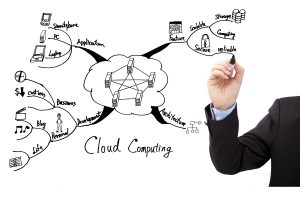 Data helps organizations make more informed decisions about how they serve their customers. Data informs policy and procedures and feeds more personalized interaction with people. But with great power comes vast responsibility. The data that organizations hold can be incredibly personal. It's more than just someone's social security number. It is information about where people live, work, shop, keep their money, get their news, and more. Individuals should have control over who knows this information and, if they do have it, how they use it. However, most of us do little to understand our privacy rights beyond blindly clicking a checkbox that allows sites to collect information about our activities.
Data helps organizations make more informed decisions about how they serve their customers. Data informs policy and procedures and feeds more personalized interaction with people. But with great power comes vast responsibility. The data that organizations hold can be incredibly personal. It's more than just someone's social security number. It is information about where people live, work, shop, keep their money, get their news, and more. Individuals should have control over who knows this information and, if they do have it, how they use it. However, most of us do little to understand our privacy rights beyond blindly clicking a checkbox that allows sites to collect information about our activities.
Data privacy practices ensure that the data shared by customers is only used for its intended purpose. A multitude of laws, including the Health Insurance Portability and Accountability Act (HIPAA), Electronic Communications Privacy Act (ECPA), Children's Online Privacy Protection Act (COPPA), and General Data Protection Regulation (GDPR) have been enacted to provide guidelines to organizations and promises of data privacy to individuals.


 The latest Federal IT Acquisition Reform Act (
The latest Federal IT Acquisition Reform Act ( The battles of tomorrow will likely not be fought on the ground, they will take place in cyberspace as nation-states and rogue actors alike look to interrupt the everyday functions of a country via high-tech attacks. Recently we saw the
The battles of tomorrow will likely not be fought on the ground, they will take place in cyberspace as nation-states and rogue actors alike look to interrupt the everyday functions of a country via high-tech attacks. Recently we saw the In one of its first acts, the 117th Congress passed the
In one of its first acts, the 117th Congress passed the The past year has seen us living with the reality of virtual. Video calls, online meetings, streamed events - the majority of our connections have happened through a screen. While this is our current reality it is not virtual reality in the truest sense. By
The past year has seen us living with the reality of virtual. Video calls, online meetings, streamed events - the majority of our connections have happened through a screen. While this is our current reality it is not virtual reality in the truest sense. By 
